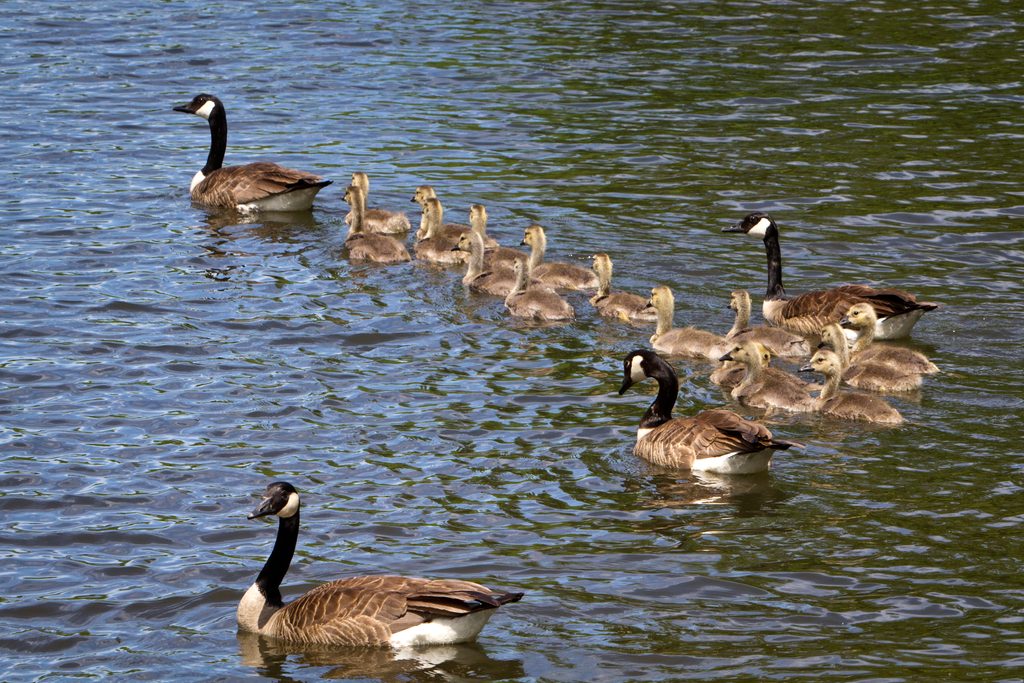
The Canadian Geese (Branta canadensis) have been seen around the Lyman Lakes and in The Arb with their little goslings these days. The protective moms and dads hiss at pedestrians, fearful for the safety of their young. Canadian geese mate for life and return to their birthplace to have babies every year. Oftentimes, many goslings and mature geese are hanging out in large groups near the water. This is because geese are highly receptive to adoption, particularly in areas with dense populations. They may take in multiple groups of goslings, forming what are known as “gang broods.” These broods can include anywhere from 20 to 100 goslings but are typically overseen by just a few adult geese. When the adult pairs are cooperative, this arrangement can be seen as mutually beneficial: it ensures that at least one adult remains with the goslings for protection, while the others are free to forage (in.gov). Gosling survival rate is about 21.2% (seafwa.org). Foxes, crows, and other birds are the goslings’ biggest
predators.
Canadian Geese, often seen flying in large V – formations, Formerly seen as a symbol of wilderness, this species has successfully adapted to human environments, frequently nesting near park ponds and golf courses. Their presence near human activity often leads to mixed reactions, many find their droppings and aggressive behavior off-putting. Despite their sometimes territorial nature, Canadian Geese play an important role in local ecosystems, grazing on grasses and helping control certain insect populations, along with their active role in the food chain. Even though we all have to be more aware when walking near the lakes, it is pretty cool that some of the goslings we see will go on to raise their own offspring in the same place in the next few years.
- Isabelle Connolly ’27, for the Cole Student Naturalists
Add a comment